Inside The New York Botanical Garden
Sonia Uyterhoeven
Posted in Gardening Tips on November 10 2008, by Sonia Uyterhoeven
Garden Cleanup
 Sonia Uyterhoeven is Gardener for Public Education at The New York Botanical Garden.
Sonia Uyterhoeven is Gardener for Public Education at The New York Botanical Garden.
 The season is slowly starting to wind down. Many of your annuals and tropical plants that have lived happily through the summer and into the fall are starting to dwindle. Add spent annuals to the compost pile and clean up and store tropical plants that can be either over-wintered on a sunny windowsill or stored in a dormant state in a cool garage.
The season is slowly starting to wind down. Many of your annuals and tropical plants that have lived happily through the summer and into the fall are starting to dwindle. Add spent annuals to the compost pile and clean up and store tropical plants that can be either over-wintered on a sunny windowsill or stored in a dormant state in a cool garage.
You will find that you are left with used terra-cotta pots. Rather than being lazy and placing them aside with the unfulfilled promise that you will clean them in the spring, take the time to clean your pots now, while the gardening season is winding down.
By cleaning your pots, your ensure that no disease problems are carried over to the next year. Often, it is as simple as filling the laundry room sink with hot, soapy water (dish soap is fine) and letting them soak. Buy a good, stiff scrub brush for the specific purpose of cleaning your pots, and you will be all set to go.
If you have encountered some serious disease problems over the season, you can sterilize your pots with a 10 percent bleach solution (one part bleach to nine parts warm water). Let them soak for 30 minutes. Gardeners have their own favorite recipes. The important things is that you clean the pots in the fall so that pest and disease problems don’t sit and fester until the spring.
Once you have finished, dry and stack you pots upside down in your garage.
Posted in Gardening Tips on November 3 2008, by Sonia Uyterhoeven
Fall Container Candidates
 Sonia Uyterhoeven is Gardener for Public Education at The New York Botanical Garden.
Sonia Uyterhoeven is Gardener for Public Education at The New York Botanical Garden.
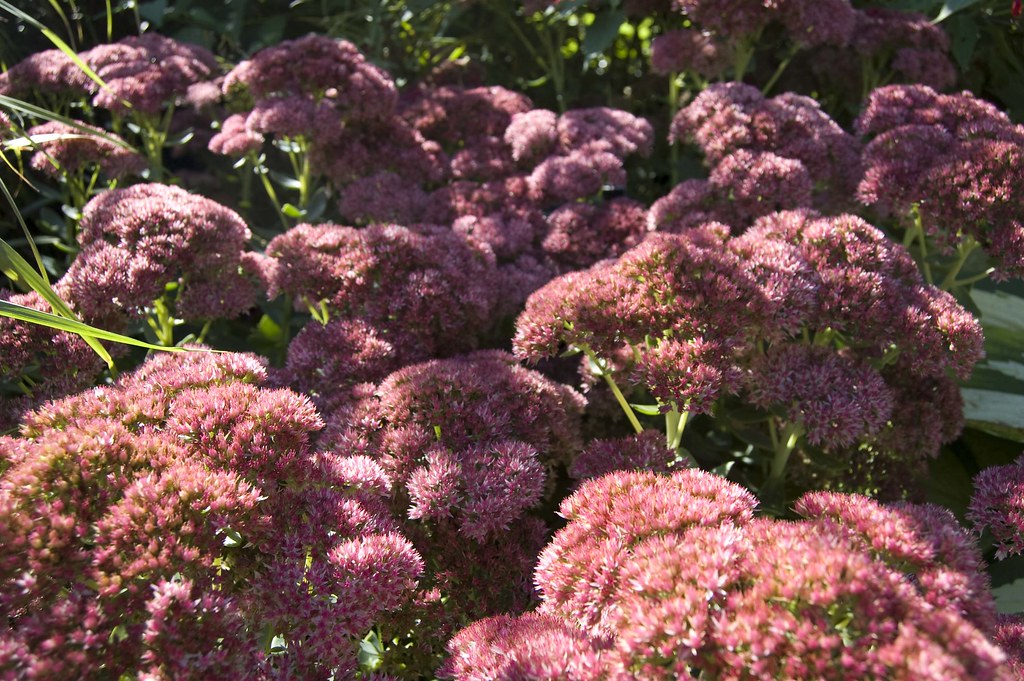 The classics for fall containers tend to be mums (Minnesota has come out with a wonderful series of cushion mums) and ornamental grasses. If you would like to spice them up with something new, why not add some Bergenia (pigsqueak) or winter heaths and heathers?
The classics for fall containers tend to be mums (Minnesota has come out with a wonderful series of cushion mums) and ornamental grasses. If you would like to spice them up with something new, why not add some Bergenia (pigsqueak) or winter heaths and heathers?
Heathers (Calluna vulgaris) have wonderful foliage that comes in many shades of green, gray, gold, copper and orange. Heathers tend to flower in summer through the late fall and love full sun and good drainage. Winter heaths (Erica carnea)—as the name suggests—flowers in the winter months. The foliage tends not to be as spectacular as heathers but still come in colorful choices. They can handle partial shade but prefer full sun like their counterparts.
A good candidate for bergenias is a cultivar called Bergenia ‘Bressingham Ruby’. It has burgundy fall foliage and fares well in sun or shade. Pair it with a colorful sedge such as Carex oshimensis ‘Evergold’ for a striking container arrangement. If you are looking for some height in the container, Sedum ‘Autumn Fire’ is a slightly more compact version of the ubiquitous Sedum ‘Autumn Joy’, whose spent blooms remain standing for most of the winter for great late-season interest.
Posted in Gardening Tips on October 27 2008, by Sonia Uyterhoeven
Mum Madness
 Sonia Uyterhoeven is Gardener for Public Education at The New York Botanical Garden.
Sonia Uyterhoeven is Gardener for Public Education at The New York Botanical Garden.
 One of my favorite perennials in the garden is Chrysanthemum ‘Sheffield Pink’. It is dependable, requires very little care, and gets along beautifully with every perennial or shrub it encounters—bringing out the best in everyone.
One of my favorite perennials in the garden is Chrysanthemum ‘Sheffield Pink’. It is dependable, requires very little care, and gets along beautifully with every perennial or shrub it encounters—bringing out the best in everyone.
In October, ‘Sheffield Pink’ is covered with pale apricot-pink daisy-like flowers. It combines wonderfully with Sedum ‘Matrona’, Aster tartaricus ‘Jin dai’, mophead hydrangeas such as Hydrangea ‘Preziosa’, and ornamental grasses.
In the Garden we have placed ‘Sheffield Pink’ in front of a Kousa dogwood (Cornus kousa) and a drift of Aster tartaricus ‘Jin dai’. As the season progresses, the foliage of the Kousa dogwood changes to a fiery red and picks up all the tints of red and pink in the ray petals of the chrysanthemum. The purple-blue of the aster adds a colorful edge to the design.
Migrating monarchs flock to ‘Sheffield Pink’ to be joined by bees for a late-season snack. I cut this mum back by half in mid-June to encourage good branching and to restrain its height so that I don’t have to go out and stake it once the stems are laden with flowers.
Posted in Gardening Tips on October 20 2008, by Sonia Uyterhoeven
Bulbous Pleasures
 Sonia Uyterhoeven is Gardener for Public Education at The New York Botanical Garden.
Sonia Uyterhoeven is Gardener for Public Education at The New York Botanical Garden.
 September through November is a busy time in the garden for planting bulbs. Daffodils are generally the first to go in the ground while tulips are the last—going in from late October all the way up to Thanksgiving.
September through November is a busy time in the garden for planting bulbs. Daffodils are generally the first to go in the ground while tulips are the last—going in from late October all the way up to Thanksgiving.
Some years the squirrels do their best to sabotage our plans for a beautiful early season display. That’s when the plastic netting comes out and is pinned down over the area. Hot pepper sauce is sprayed as an additional warning for any curious critter to stay away. Generally, however, these defensive tactics are not needed. Once the bulbs are planted, usually to a depth of three times their diameter, the soil is tamped down with an iron rake and that is usually enough to discourage squirrels, who rather dig in freshly turned soil.
Most bulbs are left to naturalize in the garden. Tulips are the exception; for the most part these short-lived bulbs are used as annuals in the garden. In the past year, the late-flowering double tulips have been causing a stir. ‘Uncle Tom’ is a vibrant red, while ‘Angelique’ is a pale pink that pairs beautifully with ‘Lilac Perfection’.
If you are looking for a longer-lasting display, species tulips and Darwin hybrids tend to be the best for perennial displays. Plant them two inches deeper than you would other tulips to give them the best chance. Try ‘Banja Luka’ with its jumbo-sized yellow and red flower or ‘Gudoshnik’ with its variable dappled patterns.
If you are plagued by deer, don’t bother with tulips—you will just end up frustrated. Your best bet is daffodils (Narcissus) and ornamental onions (Allium); however you are not limited in these two choices. On the ornamental onion front, Allium sphaerocephalon, Allium christophii, and ‘Purple Sensation’ are the best choices for mingling in an early summer perennial border. If you are in the market for daffodils, my best advice is to come to the Garden in the spring and select your favorites from our collections.
Posted in Gardening Tips on October 14 2008, by Sonia Uyterhoeven
Autumnal Beauties
 Sonia Uyterhoeven is Gardener for Public Education at The New York Botanical Garden.
Sonia Uyterhoeven is Gardener for Public Education at The New York Botanical Garden.
 Beauties come in all shapes and sizes in the fall.
Beauties come in all shapes and sizes in the fall.
Some foliage turns from green to a brilliant scarlet as the cold nights trap sugars inside the leaves and trigger the production of the pigment anthocyanin. Two of my favorites are Virginia sweetspire (Itea virginica), which is engulfed in a burgundy flame in the fall, and the high bush blueberry (Vaccinium corymbosum), which morphs from yellow to orange to red.
Once the Kousa dogwoods (Cornus kousa) have finished feeding the birds with plump raspberry-shaped berries, the foliage turns a beautiful scarlet. This serves as a splendid backdrop to the statuesque Aster tartaricus ‘Jin dai’ that sends up tall spires covered with purple-blue daisylike flowers.
The best flower power in the garden undoubtedly comes from the perennial sunflowers and the hardy hibiscus. The dinner plate-sized flowers of the hardy hibiscus come in a beautiful array of pinks, mauves, and whites—often larger than the breadth of my hand. My two favorites this year is an impressive white named Hibiscus ‘Blue River II’ and a crinkled mauve named ‘Fantasia’.
The perennial sunflowers are covered with bright yellow flowers late in the season. Helianthus salicifolius ‘First Light’ opens up in late September. It is a shorter cultivar, reaching only 4 feet tall. This generally means no staking, a gift for the low-maintenance gardener. My favorite is the double flowering Helianthus decapetalus ‘Plenus’. This perennial sunflower blooms a month earlier than most of it compatriots, opening mid-August and extending into September.
Posted in Gardening Tips on October 6 2008, by Sonia Uyterhoeven
Birds Love Coneflower Seed Heads
 Sonia Uyterhoeven is Gardener for Public Education at The New York Botanical Garden.
Sonia Uyterhoeven is Gardener for Public Education at The New York Botanical Garden.
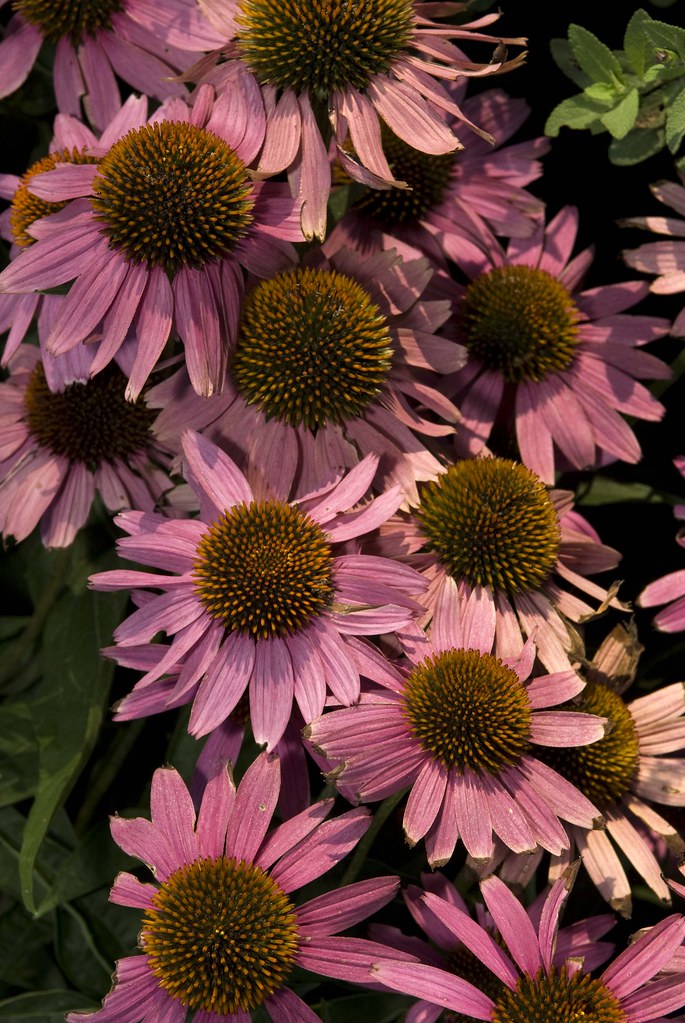 The other day I watched goldfinches fight each other for a chance to sit on the ripe seed heads of my coneflowers (Echinacea). Once the birds get a foothold, they perch precariously on the spiky seed heads and feast. This ability to attract birds is why I leave the seed heads on Echinacea, unlike most of my perennials, which I constantly deadhead to encourage more bloom.
The other day I watched goldfinches fight each other for a chance to sit on the ripe seed heads of my coneflowers (Echinacea). Once the birds get a foothold, they perch precariously on the spiky seed heads and feast. This ability to attract birds is why I leave the seed heads on Echinacea, unlike most of my perennials, which I constantly deadhead to encourage more bloom.
The magenta flowers of Echinacea always bring a smile to my face. One of my favorite coneflowers is a cultivar called ‘Rubinstern’, sometimes touted as ‘Ruby Star’. It possesses a vibrant shade of magenta that flowers dependably and continuously from late summer into early autumn in my garden.
My favorite fragrant coneflower is a pure white cultivar called ‘Fragrant Angel’. On a sunny day the fragrance is delicious. Recently, I was swept off my feet by an orange-flowered cultivar named ‘Sundown’ or ‘Evan Saul’. I was impressed by its sturdy stems and beautiful flower—a brilliant rust-colored cone and iridescent flowers of orange streaked with yellow.
Regardless of your predilection, a good coneflower is not hard to find, and it will certainly please the birds if you leave the seed heads on to ripen. Just tug off the ray flowers once they have faded and have turned brown and leave the cone intact.
Posted in Gardening Tips, Learning Experiences on September 29 2008, by Sonia Uyterhoeven
Divide and Conquer
 Sonia Uyterhoeven is Gardener for Public Education at The New York Botanical Garden.
Sonia Uyterhoeven is Gardener for Public Education at The New York Botanical Garden.
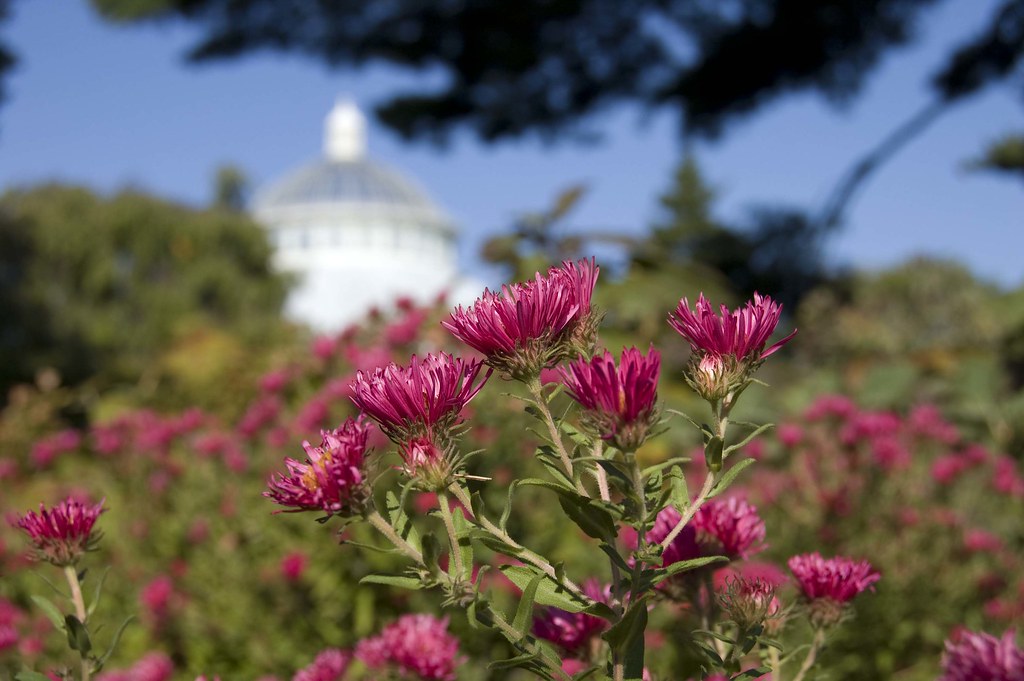 From time to time, some of your perennials will start to languish. It’s not the heat or a lack of moisture that is the cause. Sometimes they just outgrow their space, start to sprawl all over the place, and slowly die out in the middle. When this happens, it is time to divide your perennials.
From time to time, some of your perennials will start to languish. It’s not the heat or a lack of moisture that is the cause. Sometimes they just outgrow their space, start to sprawl all over the place, and slowly die out in the middle. When this happens, it is time to divide your perennials.
The general rule of thumb is to divide spring flowering perennials either immediately after flowering or in the fall, and to divide fall flowering perennials in the spring.
When you dig up the perennial be generous with the size of the root ball so that you get a good amount of roots. Garden forks often work better than spades since they do not slice through the roots.
If you are dividing in the fall, cut back the foliage to six inches—this will make it easier to see what you are doing and will help redirect the energy of the plant back into root growth. Water the perennial a day or two before you divide it to make digging easier and to make sure the plant won’t be stressed. Make your divisions large enough: A minimum of a quart-size pot is a good standard size.
Divide clumping plants such as astilbe (Astilbe), hosta (Hosta), ornamental grasses, or daylilies (Hemerocallis), with the double fork method or by slicing through them with a spade. For spreading plants such as lamb’s ears (Stachys), asters (Aster), and bee balm (Monarda), pull them apart by hand or sever with a knife or spade.
Posted in Gardening Tips on September 22 2008, by Sonia Uyterhoeven
Just Ask About Asters
 Sonia Uyterhoeven is Gardener for Public Education at The New York Botanical Garden.
Sonia Uyterhoeven is Gardener for Public Education at The New York Botanical Garden.
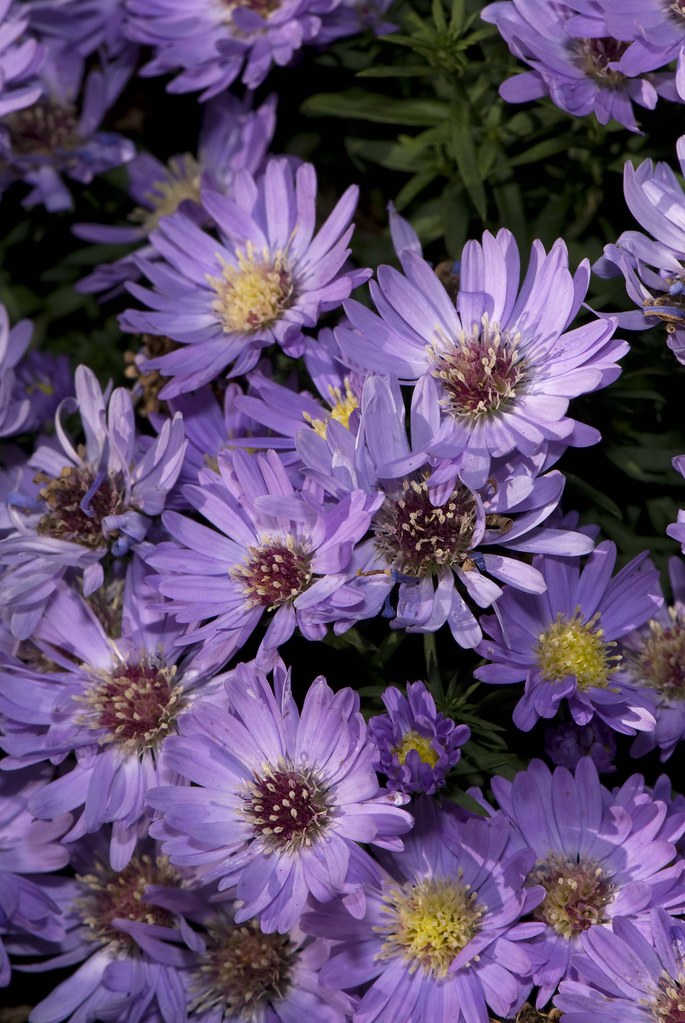 Autumn is incomplete without asters. Ornamental grasses look bare if they are not adorned by these starry creatures. Chrysanthemums and goldenrod (Solidago) look friendless without asters by their side.
Autumn is incomplete without asters. Ornamental grasses look bare if they are not adorned by these starry creatures. Chrysanthemums and goldenrod (Solidago) look friendless without asters by their side.
There are plenty of good asters on the market. One of the best for this area is Aster ‘Little Carlow’. This aster is a hybrid between Aster cordifolius and Aster novi-belgii. It has a stunning blue ray flower with yellow disks and maintains a nice compact form.
Two other good blues are Aster oblongifolius ‘October Skies’ or Aster oblongifolius ‘Raydon’s Favorite’. ‘October Skies’ is the shorter, bushier, and bluer of the two; either is worth a try in the garden.
Asters make excellent cut flowers and are attractive to butterflies. Grow them in full sun in average to dry soil.
Posted in Gardening Tips on September 15 2008, by Sonia Uyterhoeven
Crazy for Conifers
 Sonia Uyterhoeven is Gardener for Public Education at The New York Botanical Garden.
Sonia Uyterhoeven is Gardener for Public Education at The New York Botanical Garden.
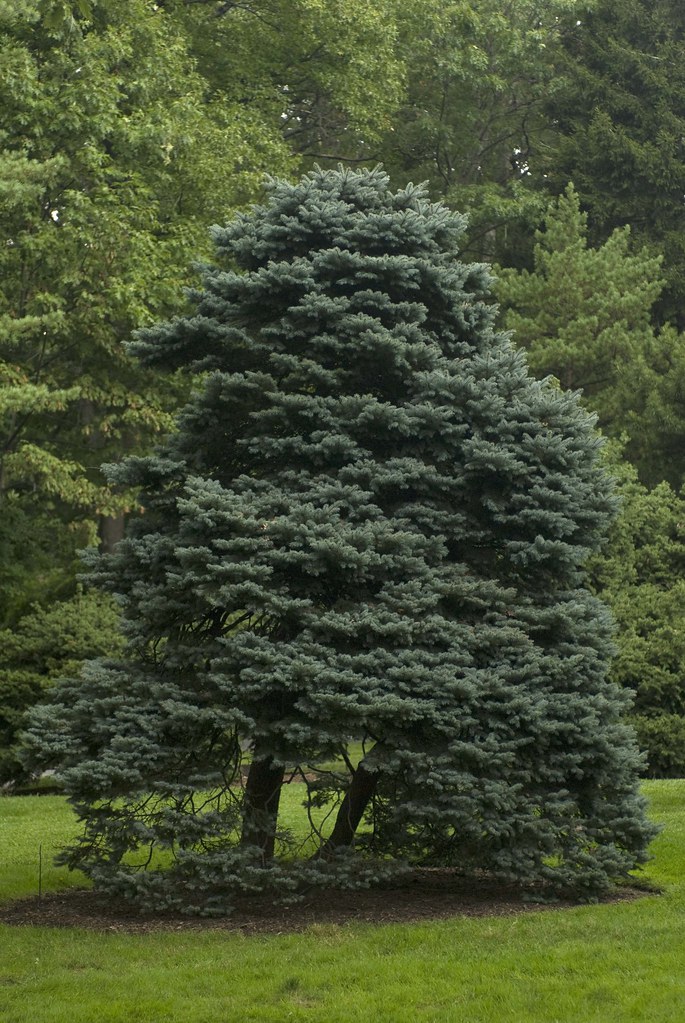 Conifers provide stately backdrops throughout the year for the garden. In the fall they are particularly spectacular as backdrops for the fireworks of fall colors. While many of them are imposing specimens, there are many fine dwarf conifers that are ideal for perennial borders and more confined spaces.
Conifers provide stately backdrops throughout the year for the garden. In the fall they are particularly spectacular as backdrops for the fireworks of fall colors. While many of them are imposing specimens, there are many fine dwarf conifers that are ideal for perennial borders and more confined spaces.
One of the most stunning examples of a dwarf conifer is the dwarf blue Colorado spruce, Picea pungens ‘R.H. Montgomery’. This is a slow-growing, compact specimen with beautiful glaucous blue needles.
If you would like a golden accent in your garden, try Chamaecyparis pisifera ‘Filifera Aurea Nana’. This Dwarf Sawara-cypress will develop into a three-foot mound.
If green is your color, the Hinoki False Cypress, Chamaecyparis obtusa ‘Nana Gracilis’, is a popular choice. It starts its life as a mound and then develops into a nice upright shape, reaching from three to five feet tall after 10 years. This little conifer can take full sun to part shade.
Posted in Gardening Tips on September 8 2008, by Sonia Uyterhoeven
Late-Season Fragrance
 Sonia Uyterhoeven is Gardener for Public Education at The New York Botanical Garden.
Sonia Uyterhoeven is Gardener for Public Education at The New York Botanical Garden.
 As you stroll through the Home Gardening Center you will find that some of the plants tickle your nose: Both foliage and flowers can be fragrant.
As you stroll through the Home Gardening Center you will find that some of the plants tickle your nose: Both foliage and flowers can be fragrant.
In the new Sensory Garden you will find the foliage of the anise hyssop (Agastache ‘Blue Fortune’) is delectable. Attractive to humans, its strong fragrance repels deer.
Continue your journey around the garden and you will find a number of wonderfully fragrant hostas in full bloom. Hostas? Fragrant? Hosta plantaginea is the old faithful for fragrance and has been around for years. A newer introduction, such as the tempting Hosta ‘Guacamole’, has beautiful variegated foliage in chartreuse and green as well as an enchanting fragrance. If that makes you too hungry and you’re a purist for aroma try Hosta ‘Fragrant Bouquet’ or Hosta ‘So Sweet’.
One of my favorite late-season fragrance comes from the awkwardly named bugbane (Actaea aka Cimicifuga). The full beauty of Actaea ‘James Compton’ is on display in the White Country Garden. This late-season perennial has rich burgundy foliage and spires of white flowers that unfurl in early September to produce a sweet perfume that will knock you off your feet.
 Sonia Uyterhoeven is Gardener for Public Education at The New York Botanical Garden.
Sonia Uyterhoeven is Gardener for Public Education at The New York Botanical Garden. The season is slowly starting to wind down. Many of your annuals and tropical plants that have lived happily through the summer and into the fall are starting to dwindle. Add spent annuals to the compost pile and clean up and store tropical plants that can be either over-wintered on a sunny windowsill or stored in a dormant state in a cool garage.
The season is slowly starting to wind down. Many of your annuals and tropical plants that have lived happily through the summer and into the fall are starting to dwindle. Add spent annuals to the compost pile and clean up and store tropical plants that can be either over-wintered on a sunny windowsill or stored in a dormant state in a cool garage.








